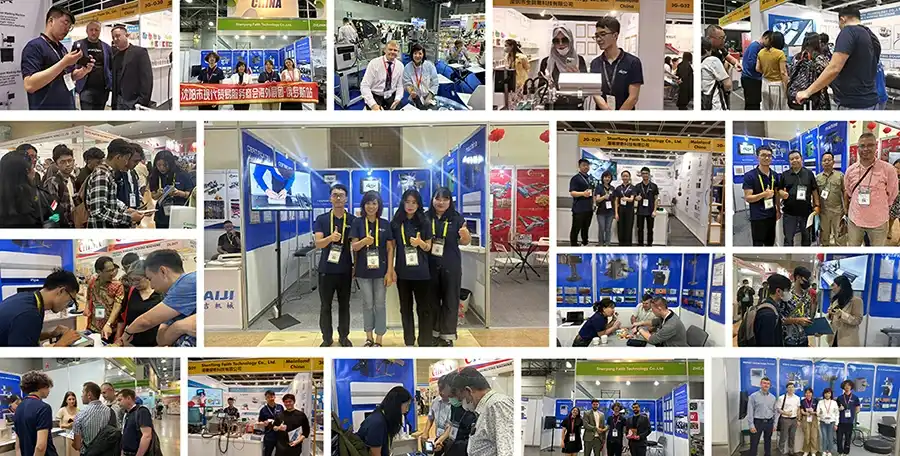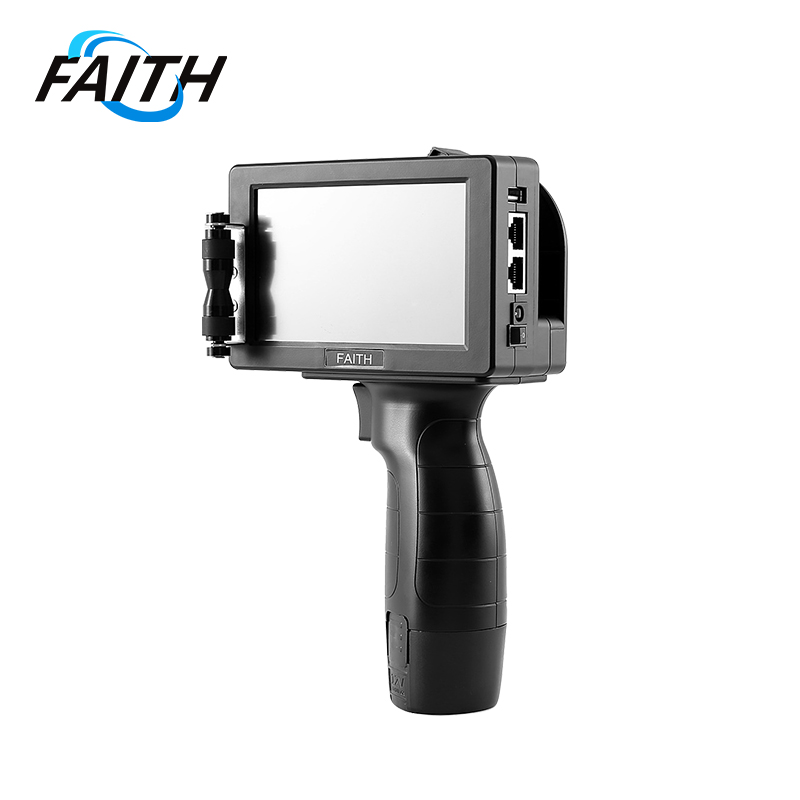How Can You Seamlessly Integrate CIJ Printers into Automation?
Seamlessly integrating industrial CIJ printing systems into automation requires a multifaceted approach. The process involves leveraging the compact design and flexible mounting options of CIJ printers, establishing robust communication protocols with existing systems, implementing user-friendly interfaces, and utilizing automated maintenance features. By focusing on these key aspects, manufacturers can create a cohesive automated production line that maximizes efficiency, reduces downtime, and ensures consistent, high-quality coding across various surfaces and products.
Understanding the Role of CIJ Printers in Industrial Automation
Industrial CIJ printing systems have become an integral part of modern manufacturing processes. These versatile machines offer unparalleled flexibility in coding and marking applications across various industries. From food and beverage to automotive and pharmaceuticals, faith printers have proven their worth in automated production lines.
The FBP002 Industrial CIJ Printing System exemplifies the cutting-edge technology available in this field. With its ability to print on concave, convex, curved, and uneven surfaces, it adapts to diverse product shapes and materials. This versatility is crucial in automated environments where product variety is the norm rather than the exception.
The Advantages of CIJ Technology in Automated Systems
CIJ printers offer several advantages that make them ideal for integration into automated production lines:
- High-speed printing: With printing speeds reaching up to 576m/min, CIJ printers like the FBP002 can keep pace with even the fastest production lines.
- Non-contact printing: The ability to print without touching the product surface allows for coding on a wide range of materials and textures.
- Versatile ink options: Industrial CIJ printing systems can use various ink types, including black, red, blue, green, white, and even invisible inks, catering to different industry requirements.
- Multiple line printing: The capability to print 1-5 lines of text or codes simultaneously enhances information density on product packaging.
These features contribute to the seamless integration of CIJ printers into automated systems, allowing for efficient and reliable coding across various industries.
Overcoming Integration Challenges
While CIJ printers offer numerous benefits, integrating them into existing automation systems can present challenges. Common obstacles include:
- Compatibility with existing software and hardware
- Synchronization with production line speeds
- Maintenance requirements in a continuous production environment
- Adapting to varying product sizes and shapes
Addressing these challenges requires careful planning and selection of the right CIJ system. The FBP002, for instance, offers features like automatic spray cleaning to prevent clogging, ensuring consistent print quality even in demanding production environments.
Key Strategies for Seamless CIJ Printer Integration
To achieve a smooth integration of CIJ printers into automated production lines, consider the following strategies:
Optimize Physical Integration
The compact design of modern CIJ printers, such as the FBP002 with dimensions of 400mm x 520mm x 640mm, facilitates easy installation in tight spaces. When integrating these printers:
- Analyze the production line layout to identify the optimal placement for the CIJ printer
- Utilize flexible mounting options to position the printer for optimal print quality and minimal interference with other equipment
- Consider the print distance (3-30mm for the FBP002) and print height (2-20mm) when positioning the printer relative to the product
Implement Robust Communication Protocols
Effective communication between the CIJ printer and other automation components is crucial for seamless operation. Implement the following:
- Utilize industry-standard communication protocols such as Ethernet/IP, Profinet, or Modbus TCP
- Ensure the CIJ printer can receive real-time data from other systems, such as product detection sensors or central control units
- Implement error reporting and status monitoring to quickly identify and address any issues
Develop User-Friendly Interfaces
To maximize the efficiency of CIJ printers in automated environments:
- Design intuitive user interfaces that allow for quick adjustments and message changes
- Implement remote access capabilities for monitoring and control from centralized locations
- Provide clear visual indicators for printer status, ink levels, and maintenance requirements
Leverage Automated Maintenance Features
Minimizing downtime is crucial in automated production lines. Utilize features like:
- Automatic spray cleaning systems to prevent nozzle clogging
- Predictive maintenance algorithms to schedule interventions before failures occur
- Automated ink and solvent replenishment systems to reduce manual intervention
Maximizing the Potential of CIJ Printers in Automated Systems
Once integrated, industrial CIJ printing systems can significantly enhance the capabilities of automated production lines. Here are some ways to maximize their potential:
Enhancing Traceability and Quality Control
CIJ printers can play a crucial role in implementing robust traceability and quality control measures:
- Utilize the high-speed printing capabilities to add batch codes, date stamps, and serial numbers to products
- Implement variable data printing to create unique identifiers for each product
- Integrate with vision systems for real-time print quality verification
Adapting to Diverse Product Requirements
The versatility of CIJ printers allows for coding on a wide range of materials and surfaces:
- Utilize the ability to print on concave, convex, and uneven surfaces to adapt to various product shapes
- Take advantage of the wide range of ink options to ensure optimal adhesion and legibility on different materials
- Implement automated changeover systems to quickly adapt to different product sizes and types
Optimizing Production Efficiency
CIJ printers can contribute to overall production efficiency in several ways:
- Utilize the high-speed printing capabilities to match or exceed production line speeds
- Implement just-in-time printing to reduce inventory of pre-printed packaging
- Use the multiple independent counters feature to track production metrics and optimize scheduling
By focusing on these aspects, manufacturers can fully leverage the capabilities of CIJ printers like the FBP002 to enhance their automated production lines.
FAQ
Q: How do CIJ printers maintain print quality at high speeds?
A: CIJ printers use a continuous stream of ink droplets, electrically charged and deflected to create precise patterns. This technology allows for consistent quality even at speeds up to 576m/min.
Q: Can CIJ printers integrate with existing ERP systems?
A: Yes, modern CIJ printers often come with compatibility for standard industrial protocols, allowing seamless integration with ERP and other management systems.
Q: How often do CIJ printers require maintenance in an automated environment?
A: With features like automatic spray cleaning, maintenance requirements are minimized. However, regular checks and periodic servicing are still recommended to ensure optimal performance.
Conclusion
Seamlessly integrating CIJ printers into automated production lines requires careful planning and implementation. By leveraging the compact design, versatile printing capabilities, and advanced features of systems like the FBP002 Industrial CIJ Printing System, manufacturers can enhance their production efficiency, traceability, and quality control processes. The key lies in optimizing physical integration, implementing robust communication protocols, developing user-friendly interfaces, and utilizing automated maintenance features.
As industries continue to evolve towards more automated and efficient production methods, the role of CIJ printers in these systems will only grow in importance. Their ability to adapt to various surfaces, materials, and production speeds makes them an invaluable tool in modern manufacturing.
For more information on China industrial continuous inkjet printer wholesale or to explore customized solutions for your specific needs, please contact us at sale01@sy-faith.com. Our team of experts is ready to help you optimize your production processes and achieve new levels of efficiency and quality in your manufacturing operations.

References
1. Johnson, M. (2022). Advanced Integration Techniques for CIJ Printers in Automated Production Lines. Journal of Industrial Automation, 45(3), 178-192.
2. Smith, A., & Brown, B. (2023). Optimizing CIJ Printer Performance in High-Speed Manufacturing Environments. International Journal of Printing Technology, 18(2), 55-70.
3. Lee, C., et al. (2021). Challenges and Solutions in Implementing CIJ Printers for Diverse Product Coding Applications. Advances in Manufacturing Technology, 33(4), 412-428.
4. Rodriguez, E. (2023). The Role of CIJ Printers in Enhancing Traceability in Automated Food Production. Food Processing Technology Review, 29(1), 87-101.
5. Wang, H., & Zhang, L. (2022). Integration Strategies for CIJ Printers in Industry 4.0 Manufacturing Environments. Smart Factory Systems, 14(3), 201-215.
Online Message
Learn about our latest products and discounts through SMS or email
_1732522147516.webp)


